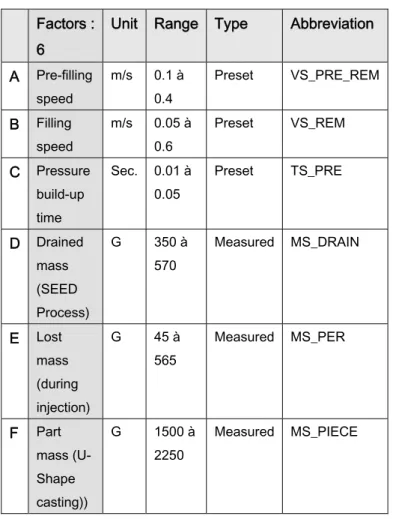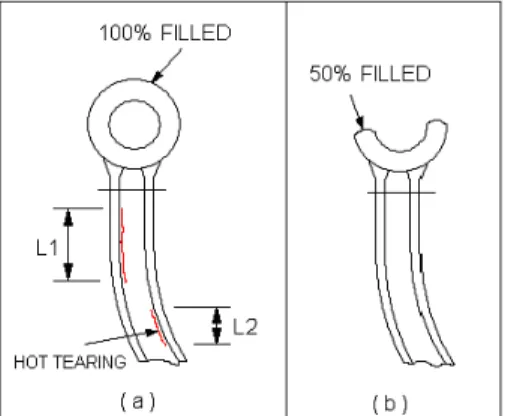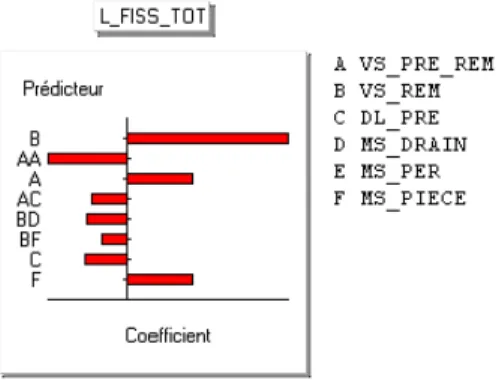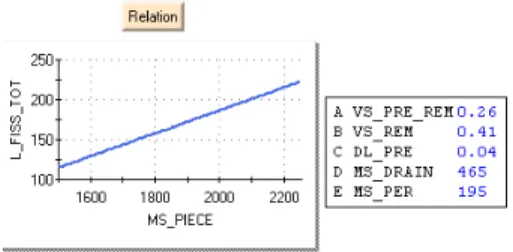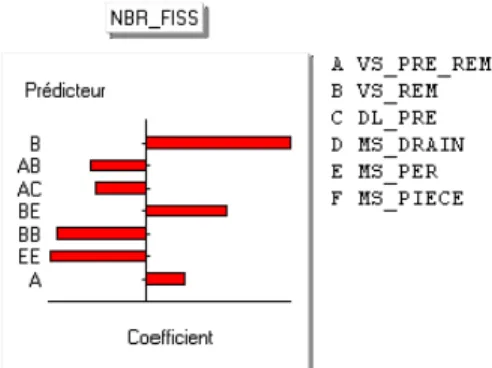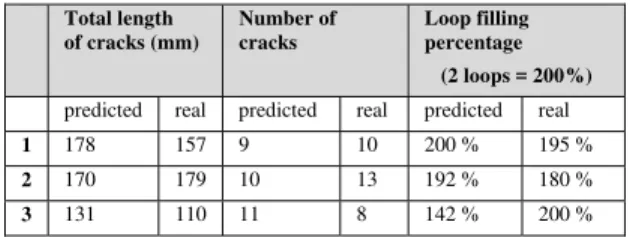Publisher’s version / Version de l'éditeur:
SP-2294: Advances In Light Weight Materials – Aluminum, Casting Materials, and Magnesium Technologies, SP-2294, pp. 1-12, 2010-04-12
READ THESE TERMS AND CONDITIONS CAREFULLY BEFORE USING THIS WEBSITE.
https://nrc-publications.canada.ca/eng/copyright
Vous avez des questions? Nous pouvons vous aider. Pour communiquer directement avec un auteur, consultez la première page de la revue dans laquelle son article a été publié afin de trouver ses coordonnées. Si vous n’arrivez pas à les repérer, communiquez avec nous à PublicationsArchive-ArchivesPublications@nrc-cnrc.gc.ca.
Questions? Contact the NRC Publications Archive team at
PublicationsArchive-ArchivesPublications@nrc-cnrc.gc.ca. If you wish to email the authors directly, please see the first page of the publication for their contact information.
NRC Publications Archive
Archives des publications du CNRC
This publication could be one of several versions: author’s original, accepted manuscript or the publisher’s version. / La version de cette publication peut être l’une des suivantes : la version prépublication de l’auteur, la version acceptée du manuscrit ou la version de l’éditeur.
For the publisher’s version, please access the DOI link below./ Pour consulter la version de l’éditeur, utilisez le lien DOI ci-dessous.
https://doi.org/10.4271/2010-01-0225
Access and use of this website and the material on it are subject to the Terms and Conditions set forth at Optimization of casting parameters on an improved AA6061 aluminum alloy for semi-solid die casting
Zheng, Chang-Qing; Simard, Alain
https://publications-cnrc.canada.ca/fra/droits
L’accès à ce site Web et l’utilisation de son contenu sont assujettis aux conditions présentées dans le site LISEZ CES CONDITIONS ATTENTIVEMENT AVANT D’UTILISER CE SITE WEB.
NRC Publications Record / Notice d'Archives des publications de CNRC: https://nrc-publications.canada.ca/eng/view/object/?id=c6ef1bc6-5de3-432a-9ca6-5ffe1ddb55b8 https://publications-cnrc.canada.ca/fra/voir/objet/?id=c6ef1bc6-5de3-432a-9ca6-5ffe1ddb55b8
Page 1 of 12
2010-10M-0062
Optimization
of
Casting Parameters
on an
Improved
AA6061
Aluminum Alloy
for
Semi-Solid Die Casting
Chang-Qing Zheng, Alain Simard
Aluminium Technology Centre, Industrial Materials Institute, National Research Council CanadaCopyright © 2010 SAE International
ABSTRACT
A study was conducted to assess the performance and castability of a new AA6061 aluminum alloy variant specially designed for semi-solid pressure die casting. The AA6061 alloy has very desirable mechanical properties for the fabrication of automotive parts. However, it has limited castability due to its low silicon content. It is not well suited for shape casting processes which are, for their part, very interesting in terms of production costs for complex-shaped automotive components. In an effort to meet automotive industry requirements, new AA6061 alloy variants have been developed by Rio Tinto Alcan researchers over the past years, aiming to improve the castability of the alloy while maintaining its desirable mechanical properties, by increasing its die-filling capacity, decreasing its hot tearing tendency. The study described herein is an example of how the performance of a single variant was assessed in terms of castability. The full study was conducted on six separate variants. A part simulating a car suspension arm was die-cast for this study. Tests were carried out by varying the casting parameters of the die-casting press and by optimizing parameters of the semi-solid slurry production. In all, nine parameters were involved in the study. The study was based on a new design of
experiment method that builds on past experience: E.M. Method*. Work performed in this study allowed unbiased comparisons of the filling capacity and hot-tearing tendency of several AA6061 alloy variants. The optimum operational parameters for a variant of alloy AA6061 were defined after a relatively low number of tests, a cost- and time-saving approach since the study had to be repeated six times.
Keywords: optimization, semi-solid, pressure die casting, DOE, aluminum, wrought alloy, SEED process
INTRODUCTION
The automotive industry is increasingly turning to aluminum parts to build vehicles [1]. However, achieving good mechanical properties often involves expensive low-productivity fabrication processes such as forging, welding, and machining, especially as regards components with complex shapes. The advantage of
conventional shape casting processes like pressure die casting is low-cost and high productivity. However, pressure die cast parts generally cannot be used because of fabrication defects and limited mechanical properties [2].
Wrought alloys have better mechanical properties than casting alloys, but remain very difficult to shape using conventional shape casting processes. This is due to their limited castability, i.e. their low capacity for filling
*
Page 2 of 12
pattern cavities, high risk of forming defects, high tendency for hot tearing, etc. Aluminum alloy AA6061 is a wrought alloy with low silicon content. Its strong mechanical properties and market availability make it one of the most popular alloys for a wide range of applications, including the automotive industry. Conventional pressure die casting (liquid state) is a high-productivity shape casting process used to chain produce complex-shaped aluminum parts at very low cost in high volumes. Generally, pressure die cast part manufacturing is much cheaper than wrought processes. On the other hand, such parts have limited mechanical properties. Semi-solid pressure die casting is a new approach which can be used to make parts that are comparable in quality to those produced with wrought processes and comparable in cost with conventional pressure die-casting. Indeed, this technology eliminates casting defects and opens possibility for additional improvement, such as heat treatment, to the production process.[3, 4]
As far as structural components are concerned, the automotive industry generally looks for low manufacturing costs combined with excellent mechanical properties. Therefore, combining the advantages of a wrought alloy like AA6061 and semi-solid pressure die casting is appealing. This could very efficiently meet structural automotive part fabrication requirements, so long as the castability of these alloys can be improved. Within the framework of a collaboration project between Rio Tinto Alcan (RTA) and the NRC Aluminum Technology Centre, variants of the AA6061 alloy, designed for semi-solid pressure die casting, have been proposed specifically for the fabrication of structural automotive parts. Certain elements have been modified or added to these new variants, in order to reduce their tendency for hot tearing and increase their overall filling ability [7]. We conducted studies to assess their performance and determine which variant yields the best results in terms of hot tearing tendency and filling ability.
The studies were carried out based on a new design of experiment (DOE) method that builds on past experience: E.M. Method [8, 9]. The experiments centered on the repetitive die-casting of a part which simulates an auto suspension arm (
Figure 1).
Figure 1. Part simulating an automotive suspension control arm [1]
The casting parameters for each of the variants were optimized separately to achieve the best possible performance for each. This process eliminates the influence of casting conditions on the performance of a specific variant, making unbiased comparisons between variants possible. For example, a low-viscosity variant requires slower injection speed to keep turbulence down when filling the die. This is in contrast with
conventional DOE methods, when the same casting parameters are applied to all of the variants compared, without accounting for castability differences. In this study, a 530-tonne pressure die casting machine was used to produce samples. The semi-solid paste was prepared using a fabrication process known as SEED, or
Page 3 of 12
Swirled Enthalpy Equilibration Device [5, 6]. This process has been patented initially by Rio Tinto Alcan and subsequently developed in a collaborative effort between RTA and the NRC Aluminum Technology Centre.
SEED PROCESS
The SEED process is used to produce semi-solid aluminum billets by mechanically stirring molten metal. Billets are then injected into a pressure die casting machine with a cold-chamber to produce quality parts (Figures 2).
Figure 2. SEED process of Rio Tinto Alcan [2]
The parameters for the preparation of the semi-solid slurry influence billet consistency and the die filling mode, as does the drained metal mass. They can also influence slurry viscosity and hot tearing. The correct
parameters lead to uniform and globular microstructure, which can decrease slurry viscosity and thus help filling ability. However, there are also interactions between the operational parameters. For example, when billet viscosity is low, filling speed must be reduced to keep turbulence to a minimum.
For semi-solid pressure die casting, many parameters are involved in the process and sample analyses are lengthy and costly. To keep the number of tests to a bare minimum in the DOE, we used the E.M. Method. This DOE method is made up of 5 functional modules: 1- Defining parameters and objectives; 2- Conducting experimental tests and building operational domains; 3- Doing regressions and building models; 4- Validation; and 5- Multi-criteria optimization. Parameters are defined in two groups: factors and responses. Factors are also divided in two types, preset and measured values.
The operational domain, in a multi-dimensional space, is defined with continuous values and is modeled as an ellipsoid, which best discriminates between accepted tests (inside) and rejected tests (outside). Because this ellipsoid is a crude representation of the actual operational domain, perfect discrimination between all the accepted and rejected points is not always possible. Usually, limitation and constraints on the factors truncate the ellipsoid, contributing to a more realistic shape of the operational domain. It is worth noting that the rejected points provide useful information to build the operational domain. This model of the operational domain is mathematically more convenient than the actual operational domain. The size of the ellipsoid is bounded by the constraints of the relevant range of specifications and will decrease for stricter requirements.
Multivariate data analysis is used to reduce the dimension of the problem and to visualize the test distribution. The most useful two-dimensional pictures present the projection of the tests points in the plane of the first principal components. Figure 3 provides a simplified view of the multidimensional domain in the plane of the first and second principal components, and accounts for the largest percentage of the data variability.
Page 4 of 12
Figure 3. Simplified view of the multidimensional operational domain with E.M. optimisation
Multi-criteria optimization consists in maximizing a desirability function which expresses the importance of combined criteria in relation with targeted goals. A direct research method is applied to find optimal solutions.
EXPERIMENTAL METHOD
The tests were conducted on a U-shaped part (Figure 4), with 6 variants of the modified AA6061 alloy. The billet preparation and casting parameters were combined in an effort to better understand the interactive effects between the two sets of parameters. Standard liquid metal treatment and control steps were applied to the aluminum in the furnace, e.g. chemical composition check, rotary fluxing and degassing plus settling time. The following discussion exemplifies a series of experiments on a single variant of alloy AA6061 cast in the semi-solid state.
Figure 4. U-Shape component for trial
DEFINING THE PARAMETERS AND THEIR RANGE
There are 9 parameters in the study, 6 of which are factors and 3 are responses. The parameters and their specific range are listed in Tables 1 and 2. The factors used are the following: Pre-filling speed; Filling speed; Pressure build-up time; Drained mass; Lost mass; and Part mass.
Page 5 of 12
Table 1. Factors and their range
Factors : 6
Unit Range Type Abbreviation A Pre-filling speed m/s 0.1 à 0.4 Preset VS_PRE_REM B Filling speed m/s 0.05 à 0.6 Preset VS_REM C Pressure build-up time Sec. 0.01 à 0.05 Preset TS_PRE D Drained mass (SEED Process) G 350 à 570 Measured MS_DRAIN E Lost mass (during injection) G 45 à 565 Measured MS_PER F Part mass (U-Shape casting)) G 1500 à 2250 Measured MS_PIECE
Table 2. Responses and their typical range
Responses : 3 Unit Range Type Abbreviation
Total length of cracks mm 0 à 200 Measured L_FISS_TOT Number of cracks 0 à 12 Measured NBR_FISS Loop filling percentage (2 full loops = 200%) % 70 à 200 Evaluated REM_BOUC
The tracked responses consist of:
• Total length of cracks: The lengths of cracks were measured and added up for each part. • Number of cracks: The total number of cracks in a single part.
• Loop filling percentage: The upper section of the part is made up of two loops, which are the last sections to be filled. The filling conditions of the two loops were measured as percentages (Figures 5).
Page 6 of 12
Figure 5. Schematic view of the cast part upper section with loops
TESTS CONDUCTED
Forty-five castings were produced. Twenty-three of the tests were considered acceptable because they met the ranges, and 22 were rejected because they did not meet all of the pre-established acceptable ranges.
RESULTS AND DISCUSSION
OPERATIONAL DOMAINS
The distribution of test points is relatively uniform inside the operational domain (Figure 6).
Figure 6. Operational domain and tests distribution
REGRESSION MODELS
Regression models based on the tests conducted were established to determine the influential parameters and quantify their effects on castability (see the figures below).
Page 7 of 12
Total Length of Cracks
Figure 7. Influential factors and their relative impact on total length of cracks
(L_FISS_TOT)
According to Figure 7, filling speed, VS_REM, is the most significant factor influencing the total length of cracks. Pre-filling speed, VS_PRE_REM, is the second most influential factor. Part mass also has an effect on the total length of cracks. The other factors have a lesser or non-significant effect on the total length of cracks. There is an interaction between pre-filling speed, VS_PRE_REM, and pressure build-up time, DL_PRE, filling speed, VS_REM, and drained mass, MS_DRAIN.
Figure 8. L_FISS_TOT relative to pre-filling speed
Shown in Figure 8, the total length of cracks initially increases and then decreases with increasing pre-filling speed, VS_PRE_REM. When VS_PRE_REM = 0.27 m/s, the total length of cracks reaches a maximum value of 164 mm.
Figure 9. L_FISS_TOT relative to filling speed
Shown in Figure 9, the total length of cracks increases from 90 mm to 210 mm as filling speed, VS_REM, increases from 0.1 to 0.6 m/s.
Page 8 of 12
Figure 10. L_FISS_TOT relative to pressure build-up
As shown in Figure 10, the total length of cracks decreases moderately, from 186 mm to 150 mm, as pressure build-up time increases from 0.01 to 0.05 seconds.
Figure 11. _FISS_TOT relative to drained mass
According to Figure 11, the total length of cracks decreases as drained mass, MS_DRAIN, increases.
Figure 12. L_FISS_TOT relative to part mass
As shown in Figure 12, the total length of cracks increases very significantly, from 120 mm to 225 mm, as part mass, MS_PIECE, increases.
Figure 13. Interactive effect between VS_PRE_REM and DL_PRE
Based on Figure 13, an interaction can be observed between pre-filling speed, VS_PRE_REM, and pressure build-up time, DL_PRE. The upper curve is computed with a DL_PRE value of 0.01 seconds, and the lower curve from a DL_PRE value of 0.05 seconds.
Page 9 of 12
Number of Cracks and Filling Percentage
Figure 14. Factors and their relative impact on the number of cracks (NBR_FISS)
The number of cracks is always affected by filling speed and lost mass.
Figure 15. Influential factors and their relative impact on loop filling (REM_BOUC)
The most significant factors influencing loop filling are pre-filling speed, part mass, and filling speed. Validation and optimization
Three tests selected inside the feasible domain were used for validation. The list of validation tests appears in Table 3.
Table 3. Validation tests
Pre-filling speed Filling speed # Pressure build-up time
1 0.29 0.41 0.03
2 0.32 0.40 0.04
Page 10 of 12
Table 4. Validation results
Total length of cracks (mm) Number of cracks Loop filling percentage (2 loops = 200%)
predicted real predicted real predicted real
1 178 157 9 10 200 % 195 %
2 170 179 10 13 192 % 180 %
3 131 110 11 8 142 % 200 %
As can be seen in table 4, loop filling percentage in test 3 shows significant spread between the expected values and actual results. This may be due to fluctuations in the drained mass.
An optimal point was subsequently determined. The optimized point was tested by producing 30 parts with the same conditions.
Improper use of operational factors may cause significant defects in the parts, such as cracks and partial filling.
Page 11 of 12
DISCUSSION
The regression models derived from the multi-dimensional analysis show the effects of the factors (operational parameters) on hot tearing tendency and filling conditions. The overall influences of parameters for each of the properties are listed in Table 6.
Table 5. Effects of operation parameters (factors) on hot-tearing and filling ability Note :
/ : Positive effect ; \ : Negative effect ; /\ et \/ : Combined effect ; - : No effect ; U : Less significant effect .
As seen in Table 5, the effects of the following parameters can be observed:
• The pre-filling speed has a significant effect on the total length of cracks and loop filling.
• The filling speed has a significant effect on the total length of cracks, number of cracks, and loop filling. • The pressure build-up time has a significant effect only on the number of cracks.
• The drained mass has a significant effect on the number of cracks.
• The lost mass has a significant effect on the number of cracks and loop filling. • The part mass has a significant effect on the total length of cracks and loop filling.
CONCLUSIONS
1. Work performed in this study has allowed for unbiased comparison of the hot-tearing tendencies of several AA6061 alloy variants.
2. The optimum castability parameters for an AA6061 alloy variant were targeted after a relatively low number of tests; saving time and money since the study had to be repeated six times.
3. The two die-casting parameters affecting most the total length of cracks for the alloy variant studied are the filling and pre-filling speeds.
4. The number of cracks is mainly influenced by the filling speed and drained mass. 5. Loop filling is mainly influenced by the pre-filling and filling speed.
Page 12 of 12
REFERENCES
1. The Aluminum Association Inc.; «Automotive aluminum the performance advantage » (2004), Webpage http://www.autoaluminum.org
2. Major, J.F. & Richman, D., “Aluminum Automotive Castings - An Ever Expanding Role in an Increasingly Competitive Market”, in the Proceedings of the International Symposium on Recent Metallurgical
Advances in Light Metals Industries, ed. S. MacEwen & J.-P. Gilardeau, The Metallurgical Society of the Canadian Institute of Mining, Metallurgy and Petroleum, (Vancouver, British Columbia: August, 1995), pp. 25-42.
3. Jorstad, J.L., Semi-Solid Metal Processing; The High Integrity Die Casting Process (Die Casting Engineer, Vol. 48, No. 1, January 2004) pp 42-48.
4. Yurko,J., Fleming,M., and Martinez, A., Semi-Solid Rheocasting (SSR™) – Increasing the Capabilities of Die Casting Die Casting Engineer, Vol. 48, No. 1, January 2004) pp 50-52.
5. Doutre, D., Hay, G., Wales P., U.S. Patent No. 6,428,636 (August 6, 2002).
6. Doutre, D., Langlais, J., Roy, S., The SEED Process for Semi-Solid Forming, Paper presented at the 8th International
7. J. Langlais, N. Andrade, X.G. Chen and A. Lemieux; «The Wrought Aluminum Alloy AA6061 Made Suitable For Semi-Solid Forming»,CastExpo‘08 / NADCA , Atlanta, Georgia, May 2008
8. Galopin, Michel : «The E.M. Method, a new tool to reduce non-quality losses in the manufacturing industry», Forum Qualité magazine, Winter 1999-2000
9. Galopin, M., DAO, T.-M., ZHENG, C.Q., HANSQUINE, S., «A Problem Solving Tool for Optimization of Welding Processes», 5th International Conference on Computerization of welding information, Golden, Colorado, 9-12 august 1994
ACKNOWLEDGMENTS
The authors acknowledge National Research Council Canada for the support and permission to publish. The authors wish to express special thanks to Mr Dany Drolet at NRC-Aluminium Technology Center. Thanks also to our collaborators at Rio Tinto Alcan R&D in the SEED development Mr Alain Lemieux and Ms Neivi Andrade.
CONTACT INFORMATION
Chang-Qing ZhengAluminium Technology Centre of NRC 501 De l’Universite Boulevard East Chicoutimi (Quebec) G7H 8C3 Canada
Tel.: 418-545-5090 Fax: 418-545-5345
![Figure 2. SEED process of Rio Tinto Alcan [2]](https://thumb-eu.123doks.com/thumbv2/123doknet/14147212.471305/4.918.321.596.219.353/figure-seed-process-rio-tinto-alcan.webp)

